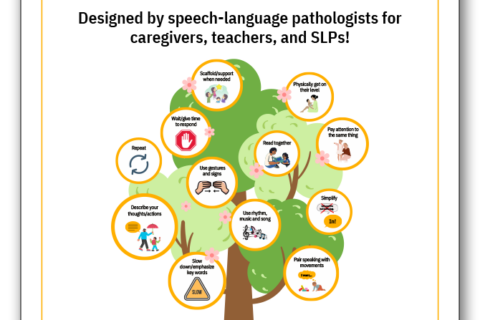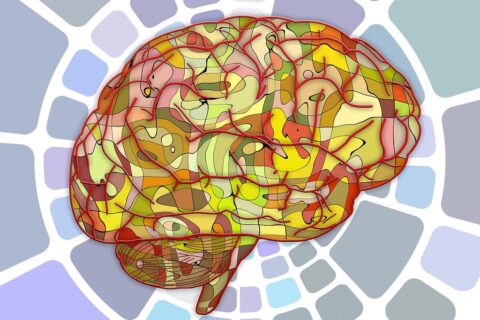What Is Dysarthria? Causes, Symptoms & Treatment

Dysarthria is a condition that makes it difficult to speak due to muscle weakness. These challenges stem from neurological conditions that make it hard to coordinate precise movements of the tongue, throat, mouth and face muscles necessary for crisp clear speech.
In this blog post, we will examine the complexities of dysarthria including its causes, symptoms, and effective dysarthria treatments.
What Is Dysarthria?
Dysarthria refers to a group of motor speech disorders caused by weaknesses in the muscular control and coordination of the organs required for speaking. These stem from disturbances in the nervous system that control the muscles of speech. Speech is affected because the muscles have difficulty executing movements with the necessary speed, strength, range of motion, timing, and accuracy required for crisp, clear words. This difficulty can impact respiration, phonation (voicing), articulation, prosody (intonation patterns), and resonance. As a result, speech may sound slurred, monotone and effortful, very fast or very slow, nasal, hoarse or breathy.
Causes of Dysarthria
The causes of dysarthria are diverse, often stemming from issues associated with neurological injuries and progressive conditions that affect the nervous system’s ability to control the muscles involved in speech production. These may include:
– Stroke
– Traumatic brain injury
– Parkinson’s disease
– Multiple sclerosis
– ALS (amyotrophic lateral sclerosis)
– Cerebral palsy
– Multiple Systems Atrophy
– Surgeries associated to structures required for speech
Additionally, certain medications or conditions affecting the muscles themselves, such as muscular dystrophy, can cause dysarthria.
Understanding the specific neurological underpinnings of an individual’s dysarthria is crucial in determining the most appropriate treatment approach. In cases where dysarthria is a symptom of a progressive neurological condition, ongoing management and support become paramount to preserving skills, slowing progression, and improving quality of life.
Symptoms of Dysarthria
The symptoms and severity of dysarthria can vary, contingent upon the specific areas of the brain affected and the degree of impairment incurred.
Symptom clusters may include:
- Difficulty regulating vocal loudness (too loud or too quiet)
- Nasal voice quality
- Strained voice quality
- Hoarse voice quality
- Breathy voice quality
- Speech that sounds choppy and effortful, because it is difficult to say more than a few words in one breath
- Limited vocal expressivity – may sound monotone
- Difficulty precisely articulating multisyllabic words due to difficulty coordinating movements of tongue, lips, cheeks, and mouth
Some may experience one or many of these symptoms. Many find that the symptoms fluctuate throughout the day and may be impacted by fatigue, stress, or cognitively loaded tasks.
Other related symptoms can involve difficulties with chewing and swallowing, a condition medically termed dysphagia, as many of the muscles involved in speaking are similarly responsible for swallowing.
Dysarthria Treatment
While dysarthria itself may not have a cure, speech therapy offers effective treatment that helps individuals manage and improve speech intelligibility, comfort, and overall ease and confidence in communicating. Speech therapy is an essential component of dysarthria treatment, involving targeted speech therapy exercises to strengthen and retrain affected motor speech subsystems.
At Open Lines®, our team of dedicated and experienced licensed speech therapists collaborate closely with patients and their care partners to craft personalized therapy plans. These plans focus on tailored speech therapy exercises and activities aimed at enhancing muscle strength, coordination, and control to facilitate clearer and smoother speech in everyday situations.
There are numerous well-researched and evidence-based dysarthria treatments available to improve communication for individuals affected by dysarthria.
To determine the most suitable approach, each plan starts with an individualized, one-on-one comprehensive evaluation conducted by a licensed speech-language pathologist. This evaluation takes a holistic approach, considering factors such as medical history, symptoms, personal strengths and goals in addition to areas of need. Furthermore, during testing, your speech therapist will assess responsiveness to trialed dysarthria treatment exercises. Results of this thorough assessment are used to design a personalized dysarthria treatment plan incorporating research-grounded techniques tailored to enhance communication skills as quickly as possible.
These techniques may include training in optimal posture and breathing, along with interventions to regulate speech rate and vocal amplitude for improved respiratory-phonatory-articulatory coordination. Pacing strategies and other methods are often employed to enhance articulatory precision, contributing to clearer communication.
Dysarthria can also affect the natural intonation and rhythm of speech. As needed, speech therapy exercises will incorporate targeted strategies to enhance prosody, aiding individuals in conveying meaning through variations in pitch, stress, and rhythm.
All Open Lines clinicians undergo highly specialized training in LSVT LOUD®. This internationally recognized dysarthria treatment is regarded as the gold standard treatment for neurologically based motor-speech disorders. LSVT LOUD involves training to optimize healthy vocal loudness, with the singular cue “loud” resulting in greater amplitude of movement across the entire motor speech system, leading to a stronger and clearer voice and speech. Research supports substantial improvements in speech quality, strength, coordination, and endurance of the motor-speech system, ultimately promoting greater ease, comfort, and intelligibility in speech for individuals living with dysarthria.
Intensive Programs for Dysarthria Treatment
Engaging in an intensive speech therapy program for dysarthria treatment can significantly enhance outcomes. These specialized programs from Open Lines provide research-founded interventions for 1 or more hours a day, 4 to 5 days a week. The intensive treatment modality capitalizes on tenets of neuroplasticity, intensity and repetition, to drive motor learning in order to help individuals quickly acquire and strengthen the skills needed to maximize results efficiently. In this comprehensive program, we focus on improving not only the physical aspects of speech, such as volume and clarity, but also on addressing challenges like impaired attention as well as the effects of anxiety and stress on communication abilities.
By engaging in an intensive speech therapy dysarthria treatment program, individuals can expect:
- Improved vocal loudness with no strain for a voice that can be heard and understood
- Improved breath support and control
- Improved intonation for voice that is more expressive
- Improved speech clarity and intelligibility
- More effective and easier communication in real-world settings
- Improved quality of life
The structured and intensive nature of these programs accelerates progress, fostering improved speech clarity and overall confidence in communication for enhanced life participation and wellbeing.
Get in Touch With Open Lines®














